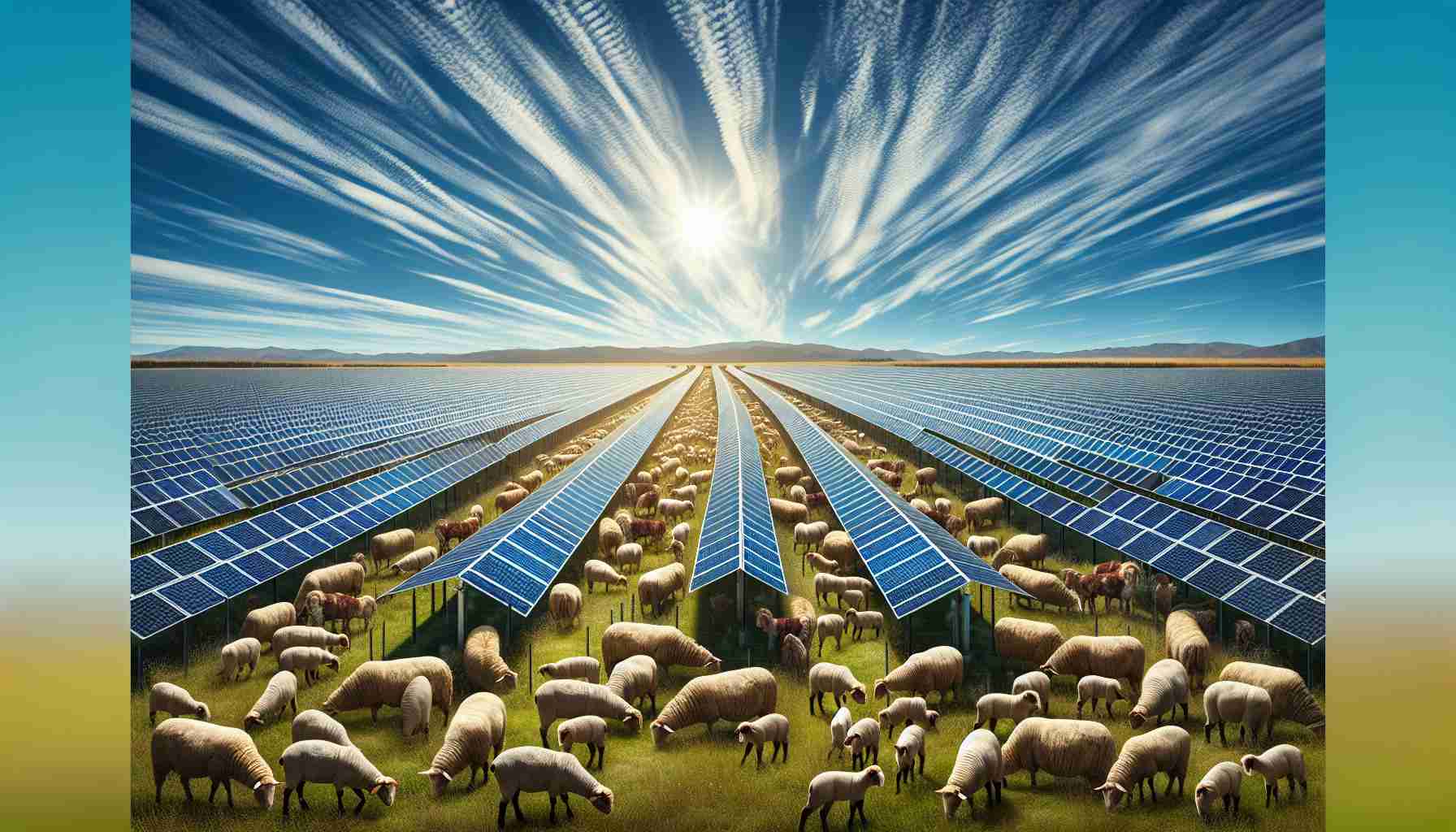
Embracing Sustainable Practices: The Rise of Solar Grazing
In an innovative twist on land management, solar grazing has emerged as a transformative practice for solar farms. Instead of envisioning sunbathers basking in the warmth, imagine flocks of sheep happily munching on the greenery surrounding solar panels. This approach highlights a clever synergy between renewable energy generation and agricultural efficiency.
As the solar industry continues to expand—especially in regions like Texas, blessed with vast land and abundant sunshine—many farms are tapping into this eco-friendly method. By using sheep to maintain the grass in solar fields, the need for maintenance equipment and gas-powered mowers significantly diminishes. This has proven beneficial for both the environment and local sheep farmers.
The Texan sheep and wool market, facing recent struggles, sees this collaboration as a silver lining. With a notable decline in sheep populations between 2023 and 2024, the ability to utilize solar energy fields offers farmers a way to sustain their livestock while supporting renewable energy initiatives.
A Texas entrepreneur, who founded Texas Solar Sheep, has pioneered this effort and reported remarkable growth in his business. His initiative not only promotes clean energy but also strengthens local agriculture.
While this harmonious agricultural practice, known as agrivoltaics, is rapidly gaining traction, further research is necessary to explore its long-term effects on soil and land use. Nonetheless, the promising interplay of solar energy and livestock grazing stands as a testament to innovative and sustainable farming practices.
The Broader Impacts of Solar Grazing on Society and the Environment
The rise of solar grazing represents not just an agricultural shift but a pivotal moment for the global economy as the world moves toward sustainable practices. This dual-use land strategy fosters a more resilient agricultural system, enhancing food security while promoting cleaner energy. As nations grapple with the implications of climate change, embracing such innovations can help mitigate economic volatility attributed to fossil fuel dependence.
Socially, the integration of sheep grazing with solar energy production bolsters rural economies by revitalizing sheep farming, an industry long in decline. As farmers adopt agrivoltaic practices, communities stand to benefit from job creation and the proliferation of local food sources. This synergy could lead to a cultural resurgence around sustainable farming, drawing increased interest from younger generations passionate about environmental stewardship.
From an environmental standpoint, solar grazing can counteract land degradation—often a byproduct of conventional farming. By improving soil health and bolstering biodiversity, it aligns with global goals for sustainability. Furthermore, as the technology for solar panels evolves, future trends may see even greater efficiency in land use, reducing pressure on arable space while promoting emission reduction and climate resilience.
As this approach matures, its long-term significance could reshape perceptions of renewable energy and agriculture, presenting a persuasive model of how collaboration can address critical challenges in an increasingly interconnected world.
Discover the Future of Farming: How Solar Grazing is Revolutionizing Agriculture and Renewable Energy
Embracing Sustainable Practices: The Rise of Solar Grazing
Solar grazing, an innovative approach to land management that integrates livestock grazing with solar energy production, is experiencing a surge in popularity. This practice not only represents a sustainable solution for maintaining solar farm landscapes but also provides a vital lifeline for struggling agricultural sectors, particularly in regions like Texas.
What is Solar Grazing?
Solar grazing involves using flocks of sheep or other grazing animals to manage vegetation in solar fields. By allowing these animals to graze, landowners can reduce the need for gas-powered machinery, thereby minimizing carbon emissions and operational costs. This mutually beneficial relationship supports renewable energy initiatives while promoting sustainable farming practices.
Benefits of Solar Grazing
– Environmental Efficiency: By using sheep to graze, solar farms decrease reliance on heavy machinery that can contribute to pollution and soil compaction.
– Biodiversity: Grazing promotes a diverse ecosystem by maintaining different plant species, which can improve soil health and support wildlife.
– Economic Viability for Farmers: Sheep farmers benefit from stable grazing grounds within solar farms, addressing challenges related to declining sheep populations and market fluctuations.
The Collaboration Between Solar Energy and Agriculture
As the U.S. solar industry continues to flourish, many farmers view solar grazing as an opportunity to diversify their revenue streams. The Texas sheep and wool market, for instance, has faced turbulence, making it increasingly vital for farmers to seek innovative ways to keep their operations viable. By employing solar grazing methods, these farmers find new opportunities while contributing to green energy production.
Market Insights
The increasing adoption of solar grazing practices is part of a larger trend in sustainable farming known as agrivoltaics, which combines agriculture with photovoltaics. According to various industry reports, agrivoltaics could potentially boost overall agricultural productivity while producing renewable energy, leading to significant economic benefits in the agricultural sector.
Limitations and Considerations
While solar grazing is promising, there are limitations and considerations that must be addressed:
– Research Needs: More studies are necessary to understand the long-term impacts of grazing on soil health and energy production efficiency.
– Species Selection: Not all livestock species are suitable for every solar farm environment, and careful planning is necessary to choose the right breed for optimal results.
– Market Variability: Fluctuations in the agricultural market may influence the feasibility of solar grazing for some farmers.
Future Trends and Innovations
Predictions indicate that the integration of sustainable practices like solar grazing will continue to grow as both solar energy usage and the demand for sustainable farming methods increase. Farmers are likely to adopt more innovative approaches, such as the use of drones for monitoring sheep and solar panel conditions, enhancing operational efficiency.
Conclusion
Solar grazing stands out as a compelling example of how agricultural and renewable energy sectors can work hand-in-hand to create sustainable solutions. As efforts like those of Texas Solar Sheep gain momentum, the synergy between sheep farming and solar power could significantly impact local economies while promoting environmental stewardship. Exploring and fostering these sustainable practices will be crucial for the future of both agriculture and renewable energy.
For more insights into the intersection of agriculture and renewable energy, visit Energy.gov.



